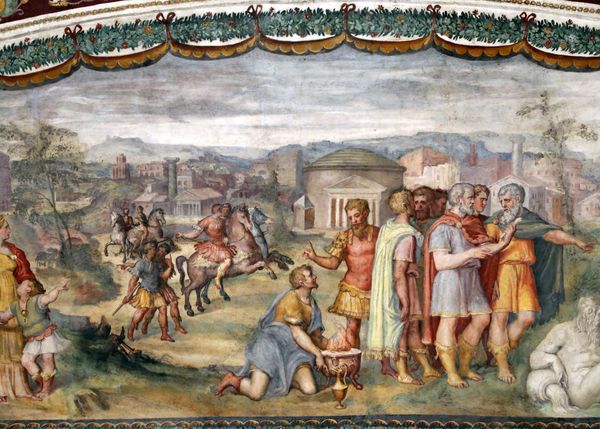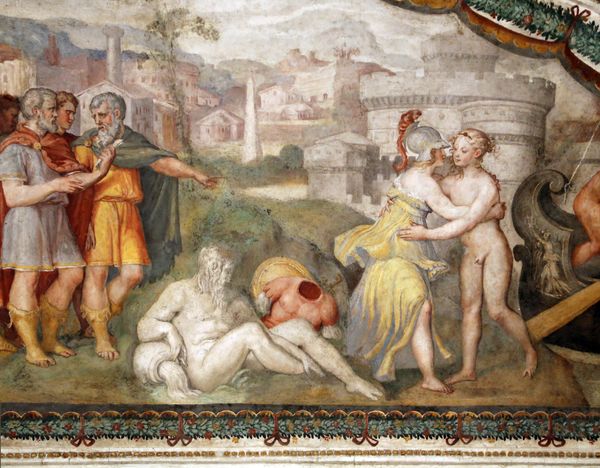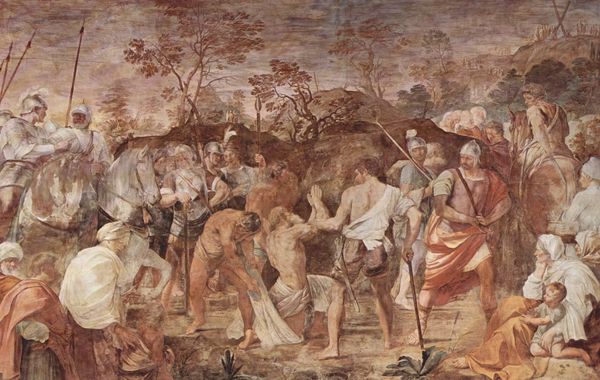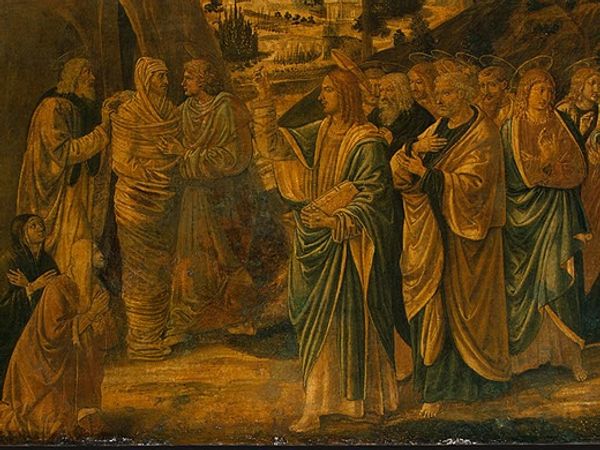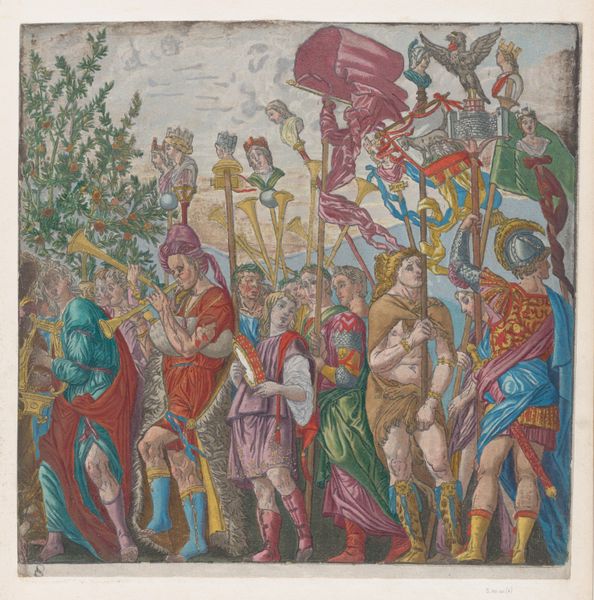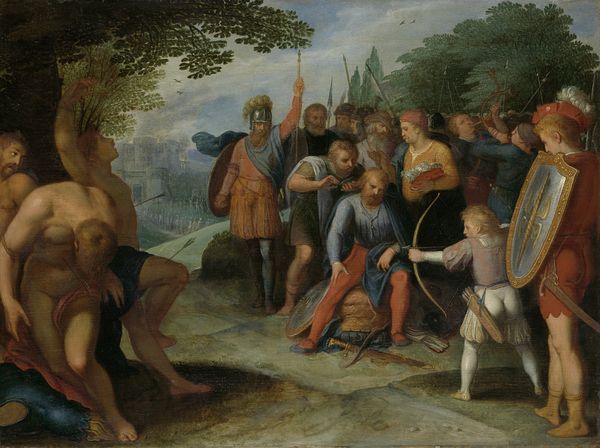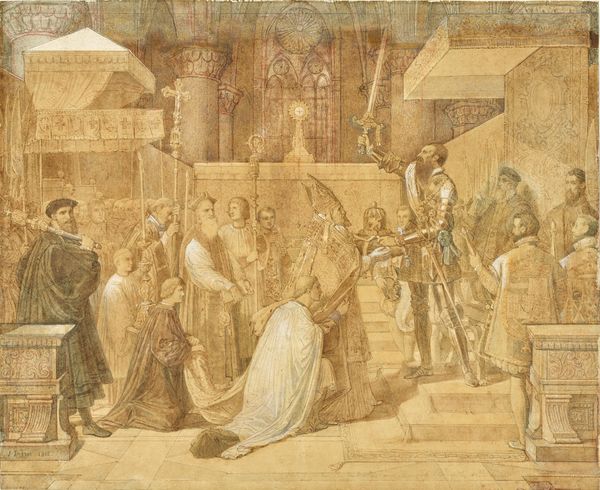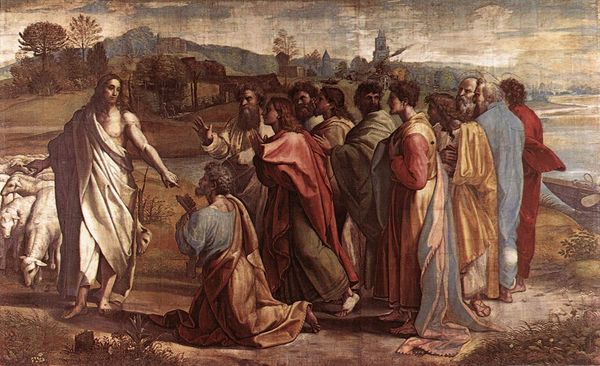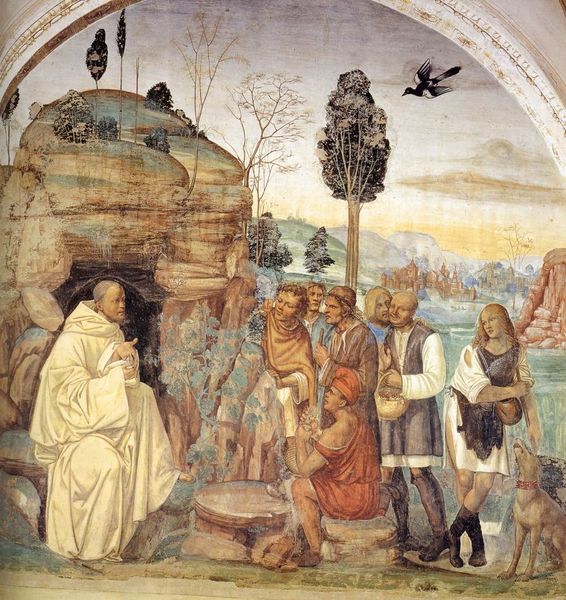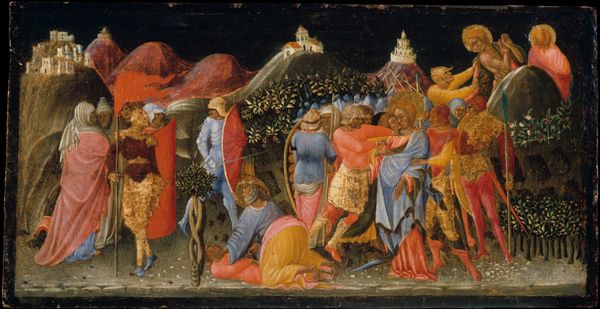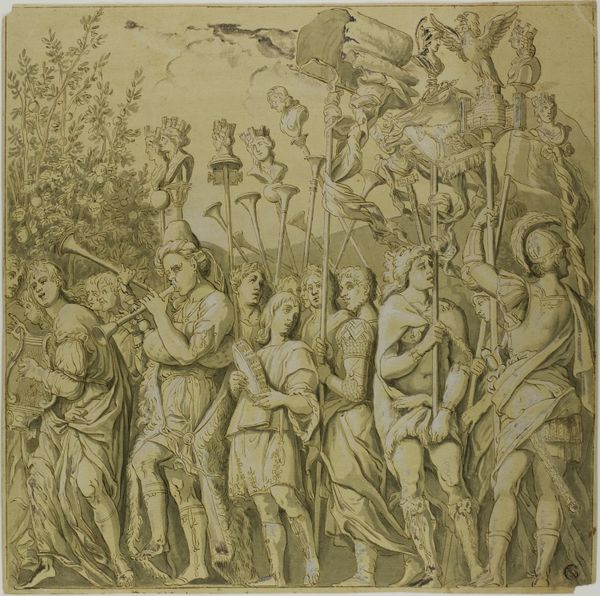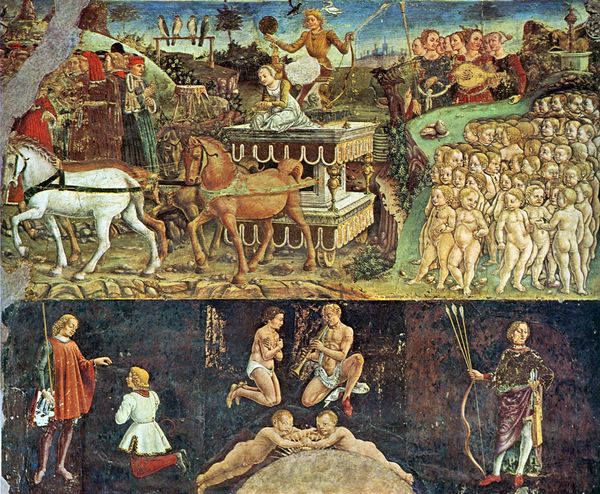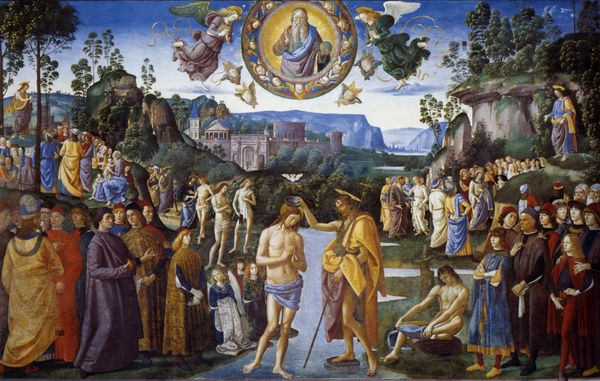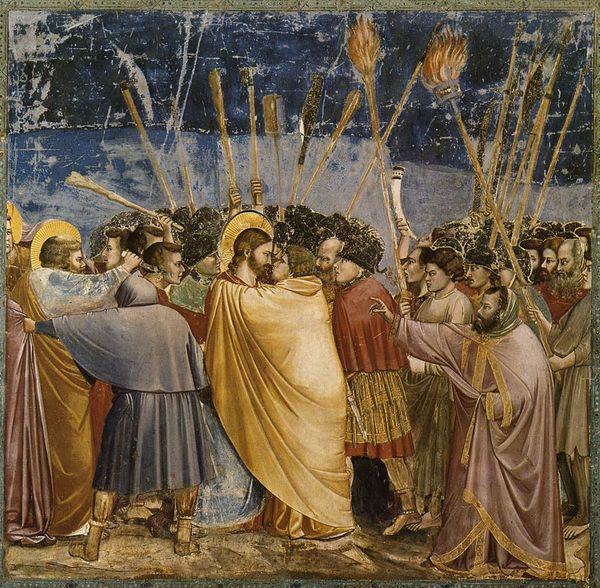
tempera, painting, fresco
#
portrait
#
narrative-art
#
tempera
#
painting
#
figuration
#
fresco
#
oil painting
#
history-painting
#
italian-renaissance
Copyright: Public domain
Curator: Standing before us is Pinturicchio’s “Reconciliation of Coriolanus,” a tempera and fresco work painted circa 1509. What strikes you most upon seeing it? Editor: The scene's palpable sense of stillness and restrained emotion. The figures are so precisely placed, it feels more like a tableau vivant than a chaotic reconciliation. Curator: Absolutely. Note how Pinturicchio utilizes the fresco medium, creating almost a tapestry-like surface. The carefully orchestrated composition with layered figures evokes a distinct narrative order. Editor: True, but it also hints at the limited role women and children played in the political sphere. Coriolanus is moved, yes, but ultimately still the sole arbiter of peace or war, which reflects on contemporary familial and civic ideology. Curator: Precisely, his moment of choice is beautifully amplified through formal pictorial devices such as line and color, and the subtle gestures within each group. The light, the forms... It all contributes to that ultimate choice. Editor: Yet there is also the tension of public duty versus familial piety. It’s powerful because of its restraint, showing how Rome viewed valor and stoicism in the face of profound political pressure and appeals to family. Curator: Note the attention to surface textures, especially the garments, each folds defined and richly ornamented. The light gives solidity and tangibility, doesn't it? Editor: Very true. In essence, Pinturicchio visually encodes the core tenets of Roman virtue and masculine dominance in his composition; one that has come to serve as visual document and socio-cultural artifact. Curator: By giving so much attention to composition and pictorial unity, Pinturicchio elevates narrative clarity into almost allegorical refinement, don’t you think? Editor: I see your point. What seemed still and emotionless initially is rendered complex when considering Rome's cultural expectations concerning duty, power, and the emotional agency of different family members.
Comments
No comments
Be the first to comment and join the conversation on the ultimate creative platform.
